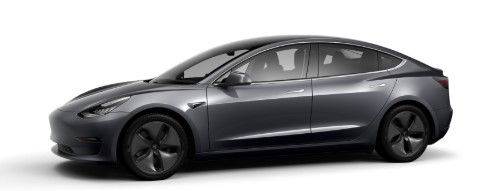
By Larry Magid
This post first appeared in the Mercury News
Though I wasn’t sure if I’d ever buy one, I was one of the first people to fork over a refundable $1,000 deposit when Tesla started taking reservations for the Model 3 in March 2016. When the cars became available in mid-2017, they were in very short supply, so I didn’t have to think about whether I would actually order one.
Finally in April I got an email from Tesla telling me that I could order one for delivery in a few weeks.
I didn’t initially take the bait. First, it’s a big ticket item. The so-called $35,000 Tesla Model 3 doesn’t yet exist. Tesla CEO Elon Musk told Leslie Stahl on last Sunday’s 60 Minutes that the low-cost model was expected to go into production in about six months, but he admitted that he wasn’t really sure about that.
That “$35,000” car costs at least $49,000
The Model 3 that people can buy now starts closer to $50,000. By the time you add its most interesting feature, the Enhanced Autopilot software, it’s nearly $55,000. If you want any color other than black, it’s another $1,500 to $2,500, depending on the color. By the time you include taxes and fees, it’s closer to $60,000 before the federal and state rebates.
Then I got a note from Tesla saying that to qualify for the full $7,500 federal electric car tax rebate, I had to take delivery in 2018, which meant ordering by November 30. Also, Tesla just launched a model with a lower range (260 vs. 310 mile) battery for $3,000 less.
I still wasn’t convinced I wanted to spend this much money on a car, but the day before I had to make a decision, I read an article about Tesla’s latest software update. Then it hit me; this is one of the very few cars that get better over time. Like a smartphone or a PC, it gets periodic updates that add features, which, in the case of Tesla, can even make the car safer to drive.
Listen to Larry’s 45 second CBS News Radio Eye on Tech segment about his new Tesla
Changes lanes and freeways
All Teslas have cruise control, but with the $5,000 Enhanced Autopilot option, the car will adjust speed based on traffic conditions. I have that feature on my Prius, but Tesla also has automatic steering.
The system will keep you in your lane, and when you engage the turn signal, it will automatically change lanes when its cameras and sensors deem that it’s safe. Autopilot has been on the Model S and Model X for a couple of years and was available when the first Model 3s arrived.
In October, Tesla updated its Autopilot software with “Navigate on Autopilot,” which will automatically take you from a highway’s on-ramp to the off-ramp closest to your destination, even if it means changing highways.
I drove from Palo Alto to Milpitas starting on Hwy. 101 and automatically merged onto Hwy. 237 without having to do anything other than flick my turn indicator to confirm that lane change (Tesla plans to eventually eliminate the need to confirm). The feature will also change lanes to help you maintain your speed if another lane will get you there faster.
The Tesla is still not an autonomous vehicle. The Autopilot requires you to keep your hands on the wheel (it checks about every 15 seconds). However, the automaker is moving in that direction, and the car is capable of being fully autonomous when the auto-driving software becomes available, which is awaiting regulatory approval.
Larry talks about new Tesla on KCBS News Radio with anchors Jeff Bell and Patti Reising
Learning curve
What I find most interesting about my first few days as a Tesla owner is how much there is to learn even to do basic things like opening the trunk or the glove box. There are very few traditional knobs and switches. Most actions require you to use the large tablet-like screen, or when you’re not driving, the smartphone app. The app, for example, is how you open the front or rear trunk, but I had to watch a YouTube video to figure out how to close the front trunk (you don’t slam it like a regular trunk, but press gently at a certain spot.) I had to study-up on how to use the windshield wipers, how to start and turn off the car, and even how to open the door.
Learning to drive a Tesla is like learning to use a computer with an unfamiliar operating system. It’s not beyond most people’s ability, but it’s not always intuitive. Fortunately, I live near a Tesla service center with a helpful staff that has patiently answered my questions.
I still have a lot to learn, and yesterday I had to pull over to go online with my phone to decipher one of the warnings that popped up on my screen. I’m sure it will take me at least a couple of weeks to learn all of its basic systems.
Tesla, of course, is not the only company with an electric car — they’re rolling out across the industry. But the real question is when other car makers will try to match Tesla’s advanced and automated features and if their cars will be as or even more complicated. My hope is that other car makers and future Tesla software updates will make driving a bit more intuitive, but in the meantime, I’m happy to be on the leading (though not bleeding) edge of car technology.